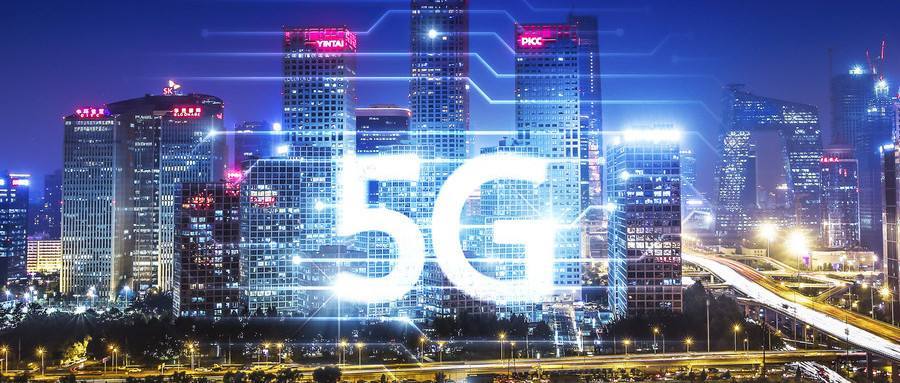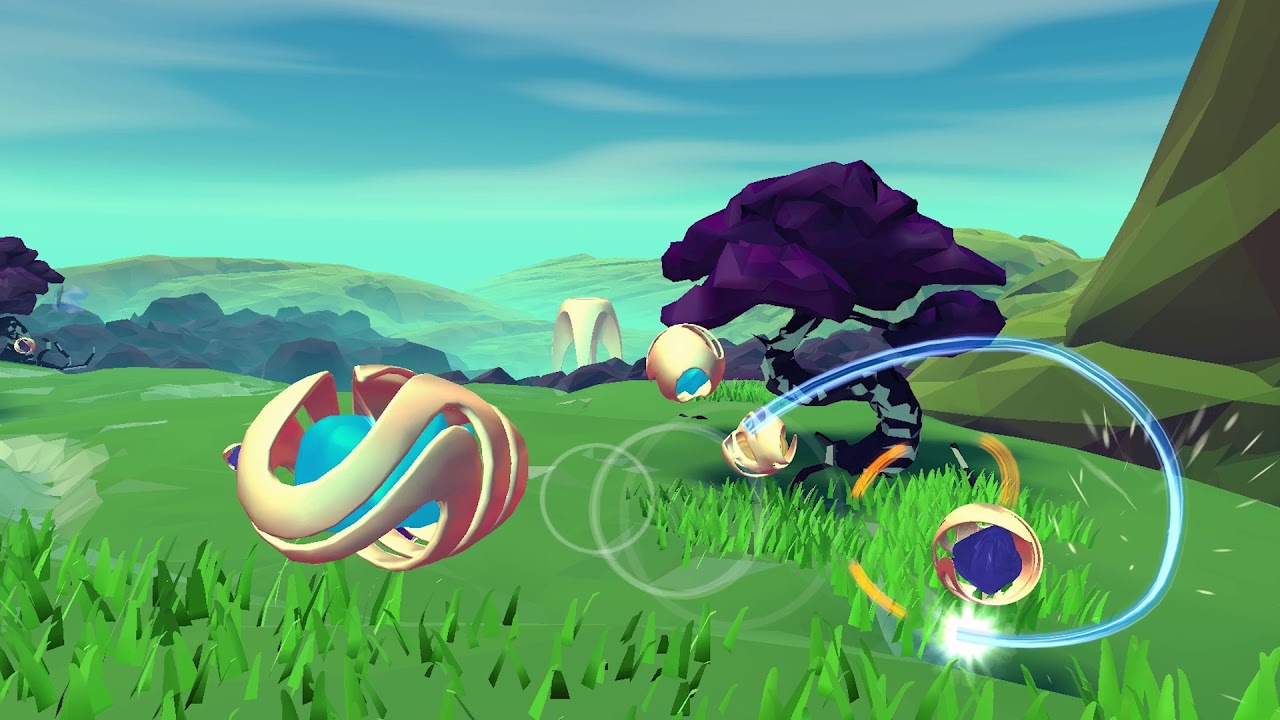VR / AR technology is not new to most people, but people have always had a bad impression of VR / AR-related entertainment products. For example, when experiencing VR technology, it is often accompanied by symptoms such as dizziness and dizziness. This is largely due to network delays. When the VR experiencer makes an action, the entire system will have a certain delay lag from monitoring the action to reflecting the motion into the VR field of view, and the audience will feel dizzy. 5G will be the best solution to the current poor VR / AR experience due to its low latency, large bandwidth, and large connections. It will further promote the development and progress of VR / AR communications.
What are the advantages of 5G technology?
Compared with 4G networks, the biggest advantages of 5G are large broadband, low latency, and large connections. Compared with the current 4G network, the fastest 5G network speed will be 100 times faster. The delay of 5G data transmission will not exceed 1 millisecond (compared to the current 4G network delay of about 70 milliseconds), and the data download The peak speed will be as high as 20Gb / s (4G is 1Gb / s). 5G has two characteristics in transmission: high bandwidth and high rate. Its peak theoretical transmission speed can reach 1GB every 8 seconds, which is hundreds of times faster than the transmission speed of the 4G network. Such transmission speed can effectively solve VR / AR content. , Especially the transmission problem of 8K and above UHD content. As long as it is under 5G environment, it takes only one minute to download or watch a Blu-ray-level, standard-length movie with related VR devices online, and it will also improve the embarrassing status of the audiovisual experience. The low-latency feature of the 5G standard also provides huge support for VR, a technology that is extremely sensitive to delay and will effectively solve the technical problem of the time delay of VR headsets.
5G technology enables the interconnection of intelligent things, realizes the communication between large-scale machines, and integrates with multiple VR / AR modes, bringing new experiences in different fields, such as VR live broadcast, VR / AR e-sports, AR medical, etc... With the landing of 5G, VR / AR will be connected with various industries to create greater business value.
Since VR (Virtual Reality) and AR (Augmented Reality) were invented, they have been regarded as transformative technologies that can completely subvert traditional human-computer interaction content.
What is VR technology?
VR is virtual reality, blocking the real world and creating a fully digital, immersive experience for users. Virtual reality technology mainly includes simulation environment, perception, natural skills, and sensing equipment. The simulated environment is a computer-generated, real-time, and dynamic three-dimensional realistic image. Perception means that the ideal VR should have the perception that all people have. In addition to the visual perception generated by computer graphics technology, there are perceptions of hearing, touch, force, movement, and even smell and taste, also known as multi-sensing. Natural skills refer to a person ’s head-turning, eyes, gestures, or other human behaviors. The computer processes the data appropriate to the participant ’s movements, responds to the user ’s input in real-time, and feeds back to the user ’s facial features. The sensing device refers to a three-dimensional interactive device.
Virtual reality is a combination of various technologies, including real-time 3D computer graphics technology, wide-angle (wide-field) stereoscopic display technology, tracking technology for the observer's head, eyes, and hands, as well as tactile / force feedback, stereo, network transmission, and voice input and output technology, etc.
What is AR technology?
AR is augmented reality, which has always been a hot word in the field of science and technology, superimposing digitally created content in the user's real world. Augmented reality technology is a new technology that integrates real-world information and virtual world information "seamlessly". It is physical information (visual information, sound, taste, touch, etc.), through computer and other scientific technologies, after simulation and superimposition, the virtual information is applied to the real world and is perceived by human senses, so as to achieve a sensory experience beyond reality. The real environment and virtual objects are superimposed on the same screen or space in real-time.
Augmented reality technology not only displays real-world information but also displays virtual information at the same time. The two kinds of information complement and superimpose each other. In the visual augmented reality, users use the helmet display to multiply the real world and computer graphics together, and then they can see the real world surrounding it.
5G helps the VR industry develop.
5G + VR is currently a common way of VR glasses. Based on VR glasses, ultra-high-definition VR content (on-demand or live broadcast) is transmitted through 5G, bringing an immersive, immersive, multi-dimensional entertainment interactive experience. It can also be used to experience 360-degree panoramic views without leaving home and is suitable for entertainment, media, movie theaters, sports, and other industries. VR is considered to be the next-generation computing platform, and its technology mainly includes aspects such as simulated environment, perception, natural skills, and sensing equipment. (1) In the entertainment industry, the main benefit of 5G is the VR game industry. Compared with mobile games and mobile games, the VR experience fully simulates the environment and has obvious advantages in creating "immersion". In the virtual world, VR breaks the "screen" concept of traditional games, making the "square" of the palm infinitely large, allowing players to appear in the game in person. (2) The application of VR in the media field in the 5G era is mainly based on the VR of new media, which has a stronger sense of immersion, interactivity, imagination, and intelligence. (3) With the support of 5G communication technology, the VR movie industry will also usher in a big explosion. Unlike today we watch movies, only see what the director wants you to watch when enjoying VR movies, we can choose to watch any corner of the movie. A VR movie can be watched several times, each time with a different perspective, and each time it participates in the movie interaction, so that every time you watch it, there will be a freshness, completely surpassing the popular 3D movies. (4) In sports events, VR live broadcast also has multiple successful application cases. VR live broadcast uses multiple cameras to shoot at points to create an interactive 360-degree virtual reality environment. Audiences can freely choose multiple perspectives to watch the game, enjoy the natural sound of the stadium, and create a truly immersive experience.
5G helps the AR industry develop.
5G + AR is a remote video visualization solution based on augmented reality. It does not require a two-handed operation at all, that is, real-time high-definition live interaction with back-end experts through the 5G network, so that experts can be online and remotely guided at any time. Applicable to many industries such as communications, medical, manufacturing, and military. AR terminals are the masters of human-computer interaction, computer vision, and display technology. The secure ubiquitous, flexible, and intelligent 5G network will change the relationship between us and mobile devices and provide a solid support for AR terminals. (1) In the field of communications, after the arrival of 5G, large-bandwidth applications are typically represented by high-definition video, AR, and VR. The 5G + AR communication system based on augmented reality technology can be widely used in industrial manufacturing, field exploration, high-precision technology maintenance quality inspection, and other fields involving large-scale field operations, to achieve intelligent operation and maintenance operations and process management. (2) In the medical field, the 5G + AR intelligent telemedicine platform is the main application object. The first is the AR remote assistance system, which connects experts and patients through smart mobile devices, helping patients in need of emergency treatment get a more professional medical diagnosis faster. The second is the AR remote consultation system. Through the introduction of AR technology, patients can remotely accept the multi-dimensional joint diagnosis of multi-party experts, which greatly improves the diagnosis rate of consultation. The third is the AR teaching and training system. Through the combination of virtual and real three-dimensional models, it is convenient for communication and learning in areas with backward medical levels and improves the level of medical teaching in schools. (3) The development of smart manufacturing has entered a critical period, and 5G will generate tremendous help. The combination of 5G and AR will hit greater potential in the field of smart manufacturing. 5G + AR can clearly monitor the production process and provide step-by-step guidance for production tasks in the intelligent manufacturing process, such as manual assembly process guidance, remote expert business support, remote maintenance, etc. (4) 5G is also accelerating the application of AR in the military field. AR-based command and control training technology will greatly improve the combat capabilities of individual soldiers and their units. On the battlefield, AR technology uses the scenes taken by drones and restores them with 3D imaging technology, which allows commanders to grasp the situation of the entire battlefield at any time and conduct accurate command. AR smart eyes and AR helmets can instantly identify complex on-site environments, obtain wind direction, distance, temperature, and other information, and even use it to find dangerous points in the future to help soldiers fight better and effectively improve individual combat capabilities.
Researchers of the DESTEK Industry Research Institute believe that with the support of 5G, huge users and all things can achieve interconnection support, which has ushered in opportunities for many industries that are ready to go, and the VR / AR industry is expected to become the first revenue after 5G landing Industry. In addition, there are 5G application scenarios in other fields, such as in the automotive field, which can be used to support AR HUD; in the entertainment field, it can also be used for 3D model display, 4K 360 ° camera; in shopping and immersive social fields, it can be used for VR + somatosensory feedback Experience, 3D holographic call, etc.



Leave a comment
All comments are moderated before being published.
This site is protected by hCaptcha and the hCaptcha Privacy Policy and Terms of Service apply.